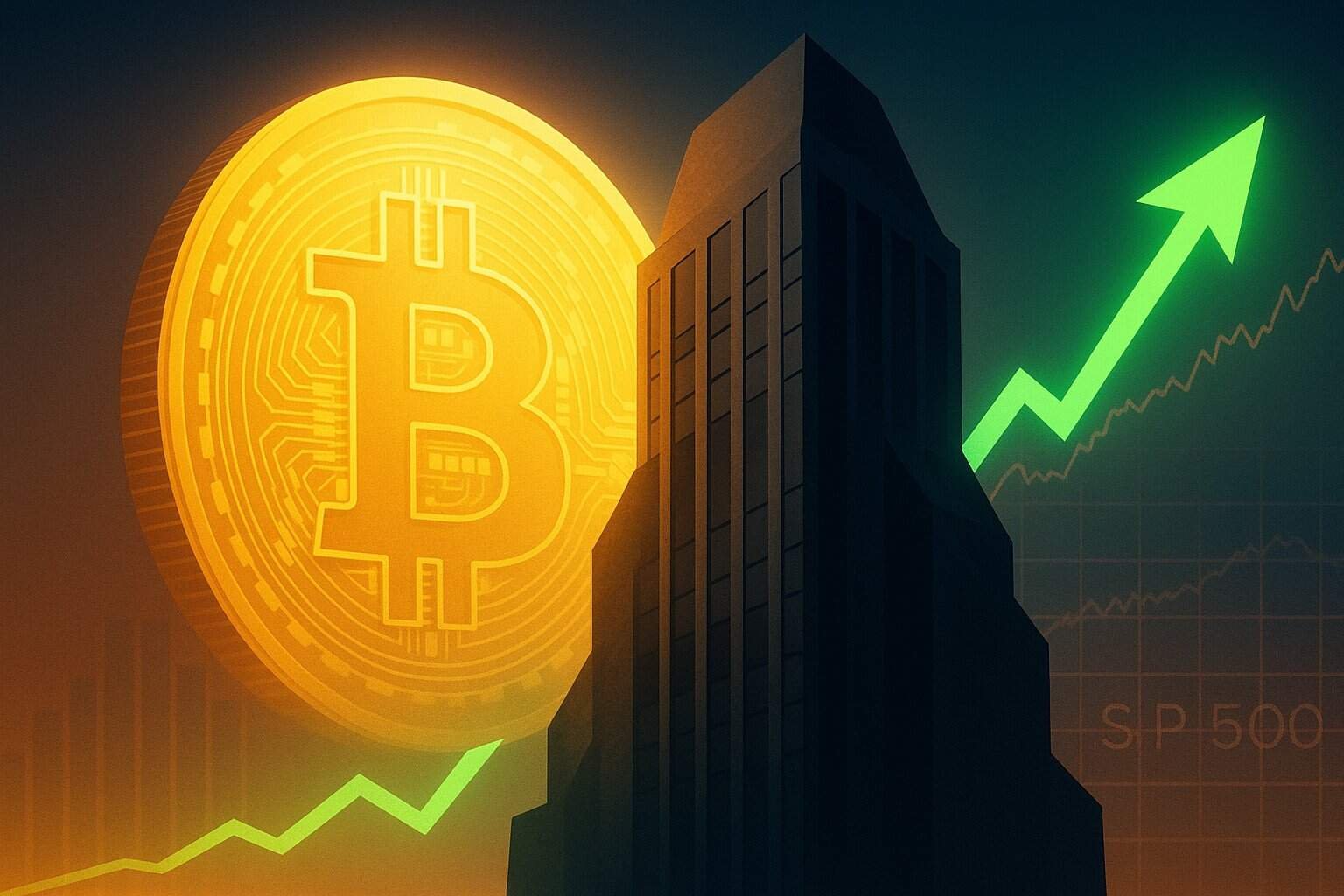A 25-basis-point fee on a fast-growing Bitcoin product now delivers more annual revenue to BlackRock than a three-basis-point fee on a $624 billion S&P 500 tracker. It’s another sign that a Bitcoin bull market is brewing and new Bitcoin all-time highs are close.
The headline numbers
| Fund | Assets under management | Expense ratio | Est. annual fee revenue |
| iShares Bitcoin Trust (IBIT) | $52 billion | 0.25 % | $187.2 million |
| iShares Core S&P 500 ETF (IVV) | $624 billion | 0.03 % | $187.1 million |
Source: Bloomberg, BlackRock, July 2 2025.
Despite IVV holding roughly nine times more assets, IBIT’s higher fee structure makes it the larger revenue generator for the world’s biggest asset manager.
How we got here
- Launch and growth. IBIT debuted in January 2024 as one of the first U.S.-listed spot-Bitcoin ETFs. Except for a single outflow month, it has attracted steady net inflows, reaching $52 billion in AUM—by far the sector leader.
- Pricing power. A 0.25 % fee looks steep next to low-cost core equity products, but it reflects custody, insurance, and regulatory overhead unique to holding a digital bearer asset. Investors have accepted the premium for turnkey exposure.
- Fee compression elsewhere. Plain-vanilla index ETFs like IVV fought a decades-long price war down to single-digit basis points. Crypto ETFs, by contrast, remain a young category where providers still command traditional “specialty” fees.

Blackrock’s Bitcoin ETF out earns its IVV ETF, source: X
Macro backdrop turbo-charging demand
- Liquidity surge. U.S. M2 money supply touched a record $21.94 trillion in May, extending a year-long climb. Extra cash in the system often finds its way into risk assets—including Bitcoin.
- Fiscal alarm bells. Bridgewater founder Ray Dalio warns that Washington’s newly enacted “Big Beautiful Bill” locks in roughly $7 trillion in annual spending against $5 trillion in revenue, pushing debt from ~100 % to ~130 % of GDP within a decade. Such deficit math strengthens the narrative for scarce, non-sovereign assets.
- Seasonal tailwind. July is historically Bitcoin’s friendliest month, averaging a 7 % gain over the past decade. Entering the month, BTC hovered just 3 % shy of its all-time high near $112 k, amplifying retail interest and, by extension, ETF flows.
Implications for BlackRock and the market
- Revenue density beats scale. IBIT’s success shows that in the ETF business, basis points multiplied by narrative can rival sheer asset heft. For BlackRock, a product representing 0.5 % of its ETF assets now matches the revenue of a core pillar.
- Competitive pressure ahead. If a rival drops fees to 15 bps, IBIT’s advantage shrinks quickly. Investors should watch for a second-round price war as Vanguard, Fidelity, and Franklin build track records in their own spot-Bitcoin offerings.
- Mainstreaming accelerates regulation. With household retirement plans accessing Bitcoin through ticker symbols, political pressure to clarify tax and custody rules will rise—potentially resetting cost structures and fee economics.
Investor considerations
| Factor | IBIT | IVV |
| Volatility | High (crypto spot price) | Low-moderate (broad equities) |
| 30-day average daily volume | $2–3 billion | $10 billion+ |
| Tracking risk | Minimal vs. spot BTC, but market hours mismatch persists | Minimal vs. S&P 500 |
| Fee trend | Likely to compress as category matures | Near rock-bottom already |
While IBIT offers convenient, regulated Bitcoin exposure, it also inherits the asset’s 24/7 price swings and potential policy shocks. IVV remains the low-cost, core beta vehicle for diversified U.S. equities. Allocators should weigh these characteristics before chasing yield-like fee revenue statistics. It does signal however, that now could be a good time to buy crypto assets. Bitcoin is looking especially strong. For those investors wondering if now is a good time to buy Bitcoin, the risk has been reduced.
Bottom line: Fee revenue, not AUM, tells a new story for BlackRock. A single-asset crypto ETF has overtaken the firm’s flagship S&P 500 fund in dollars earned—highlighting both investors’ appetite for digital assets and the premium they will still pay for simplicity and security.











